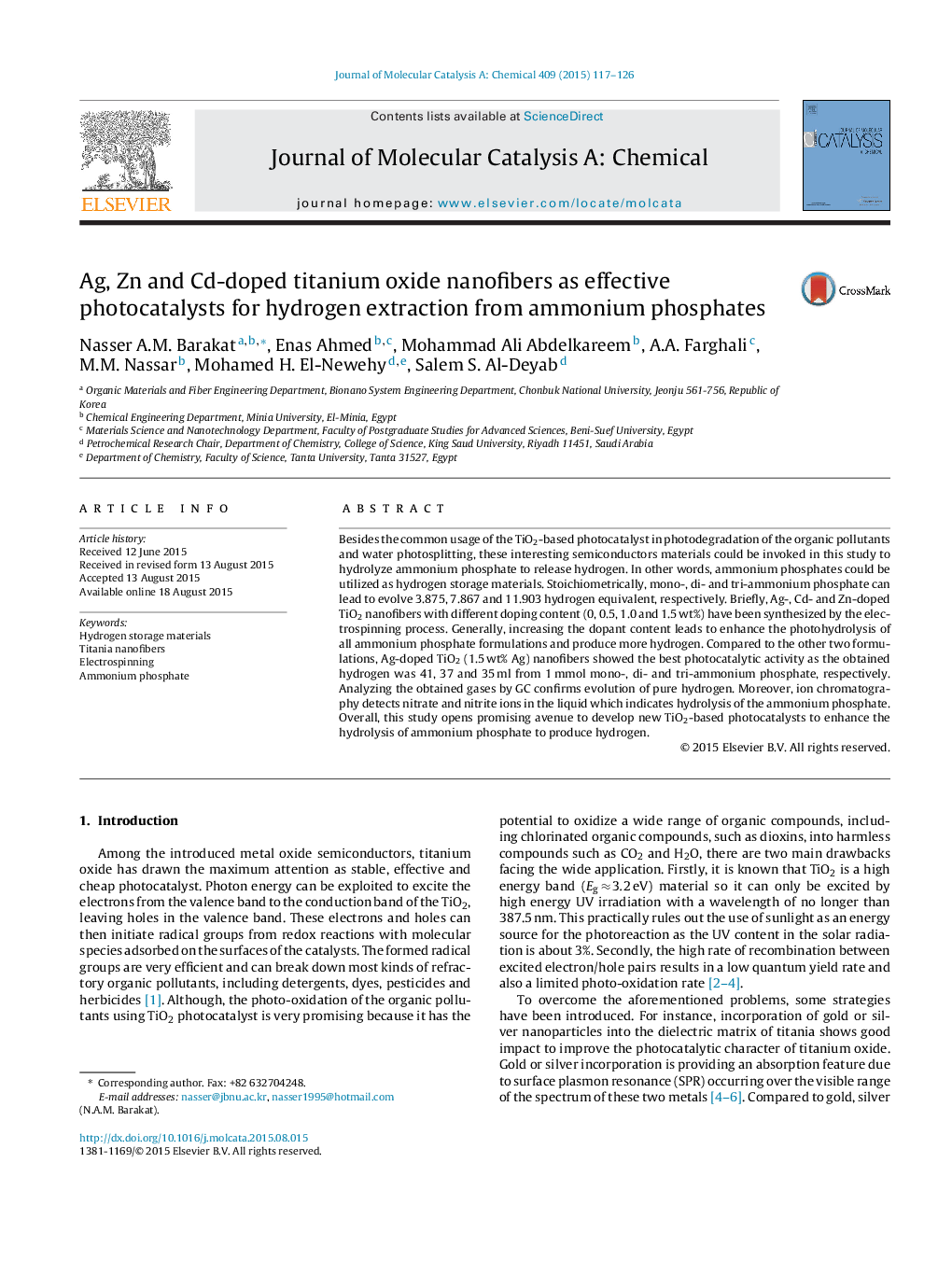| Article ID | Journal | Published Year | Pages | File Type |
|---|---|---|---|---|
| 64933 | Journal of Molecular Catalysis A: Chemical | 2015 | 10 Pages |
•Good morphology Ag, Zn and Cd-doped TiO2 nanofibers could be synthesized.•The NFs are efficient photocatalysts to extract hydrogen from ammonium phosphate.•Ag-doped TiO2 nanofibers reveal the best results.•Ammonia hydrolysis equations are introduced and hydrogen production is confirmed.
Besides the common usage of the TiO2-based photocatalyst in photodegradation of the organic pollutants and water photosplitting, these interesting semiconductors materials could be invoked in this study to hydrolyze ammonium phosphate to release hydrogen. In other words, ammonium phosphates could be utilized as hydrogen storage materials. Stoichiometrically, mono-, di- and tri-ammonium phosphate can lead to evolve 3.875, 7.867 and 11.903 hydrogen equivalent, respectively. Briefly, Ag-, Cd- and Zn-doped TiO2 nanofibers with different doping content (0, 0.5, 1.0 and 1.5 wt%) have been synthesized by the electrospinning process. Generally, increasing the dopant content leads to enhance the photohydrolysis of all ammonium phosphate formulations and produce more hydrogen. Compared to the other two formulations, Ag-doped TiO2 (1.5 wt% Ag) nanofibers showed the best photocatalytic activity as the obtained hydrogen was 41, 37 and 35 ml from 1 mmol mono-, di- and tri-ammonium phosphate, respectively. Analyzing the obtained gases by GC confirms evolution of pure hydrogen. Moreover, ion chromatography detects nitrate and nitrite ions in the liquid which indicates hydrolysis of the ammonium phosphate. Overall, this study opens promising avenue to develop new TiO2-based photocatalysts to enhance the hydrolysis of ammonium phosphate to produce hydrogen.
Graphical abstractFigure optionsDownload full-size imageDownload high-quality image (105 K)Download as PowerPoint slide
